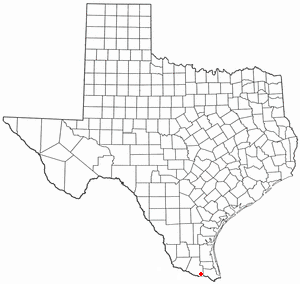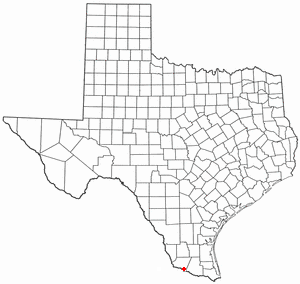
Silverton is a city in Briscoe County, Texas, United States. The population was 731 at the 2010 census. It is the county seat of Briscoe County.

Hart is a city in Castro County, Texas, United States. The population was 1,114 at the 2010 census.

Robert Lee is a city in and the county seat of Coke County, Texas, United States. The population was 1,049 at the 2010 census.

Lucas is a city in Collin County, Texas, United States. As of the 2010 census the population was 5,166, up from 2,890 at the 2000 census; in 2020, its population was 7,612.

Crosbyton is a city in and the county seat of Crosby County, Texas, United States. The population was 1,741 at the 2010 census. Crosbyton is part of the Lubbock Metropolitan Statistical Area.

Lorenzo is a city in Crosby County, Texas, United States. As of the 2010 census, the city population was 1,147, down from 1,372 in 2000. It is part of the Lubbock Metropolitan Statistical Area.

Edmonson is a town in Hale County, Texas, United States. The population was 111 at the 2010 census.

Seth Ward is an unincorporated community and census-designated place (CDP) in Hale County, Texas, United States. The population was 2,025 at the 2010 census.

Progreso is a city in Hidalgo County, Texas. The population was 5,507 at the time of the 2010 United States Census. It is part of the McAllen–Edinburg–Mission and Reynosa–McAllen metropolitan areas.

Mertzon is a city in and the county seat of Irion County, Texas, United States. Its population was 781 according to the 2010 census. It is part of the San Angelo, Texas, metropolitan statistical area.

Tahoka is a city in and the county seat of Lynn County, Texas, United States. The population was 2,673 at the 2010 census.

Stanton is a city in and the county seat of Martin County, Texas, United States. Stanton was founded as Marienfeld by German immigrants that were some of the first settlers in this region of Texas. The population was 2,492 at the 2010 census.

Texhoma is a city in Sherman County, Texas, United States. The population was 258 at the 2020 census, declining from 364 in 2010. Texhoma is a divided city, with the Texas-Oklahoma state border separating the city from Texhoma, Oklahoma. It is also the northernmost settlement in the entire state of Texas.

La Grulla is a city in Starr County, Texas, United States, founded by Juan Santiago Longoria in 1836. The population was 1,622 at the 2010 census.

Lawn is a town in Taylor County, Texas, in the United States. As of the 2010 census, the town population was 314. It is part of the Abilene, Texas Metropolitan Statistical Area.

Barstow is a city in Ward County, in the U.S. state of Texas. The population was 349 at the 2010 census.

Bayard is a town in Grant County, West Virginia, United States. The population was 200 at the 2020 census. Bayard was incorporated in 1893 and named in honor of Thomas F. Bayard, Jr., who later became a United States senator from Delaware (1923–1929). Bayard was founded on the West Virginia Central and Pittsburgh Railroad as a coal mining community. Coal mining has remained the town's chief industry.

Fair Oaks Ranch is a city in Bexar, Comal, and Kendall counties in the U.S. state of Texas. The population was 5,986 at the 2010 census and an estimated 9,700 in 2018. It is part of the San Antonio-New Braunfels Metropolitan Statistical Area. The city was named after Ralph Fair Sr, an oilman who had a large cattle ranch on the now residential town. The Fair family decided to sell a portion of the ranch to build what is now Fair Oaks Ranch in 1975.

Niederwald is a city in Caldwell and Hays counties in the U.S. state of Texas. The population was 565 at the 2010 census. Niederwald means "low forest", or "low wood", in German. It was named Niederwald by the German founders of the town. This region of Central Texas was settled in the 1800s primarily by Germans and European emigrants and is referred to as the Texas-German belt by locals.

Ackerly is a city in Dawson and Martin Counties in the U.S. state of Texas. As of the 2010 Census, the population was 220. The Martin county portion of Ackerly is part of the Midland-Odessa metropolitan area.













